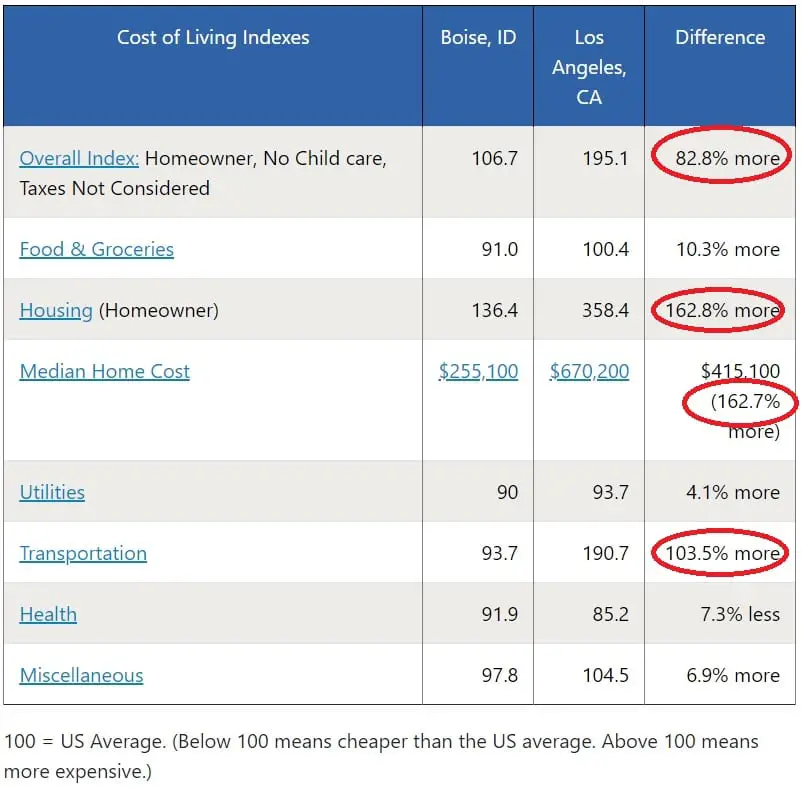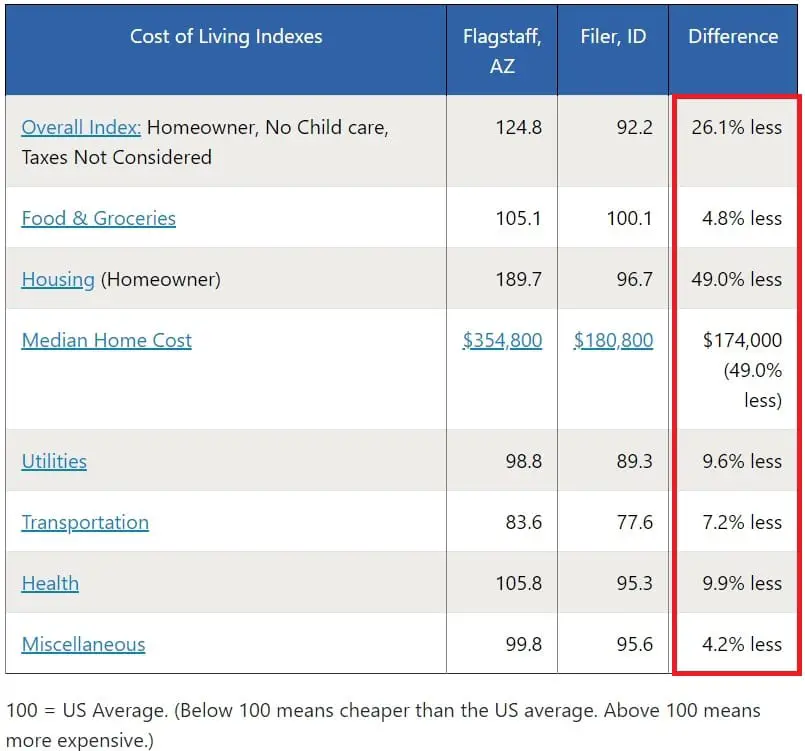“How much does an X-ray tech make an hour” is a common question from people interested in radiography.
But when I looked it up on Google, the answers were not in dollars.
So I will post an answer for those of us paying in good ‘ol American greenbacks.
The tricky part is trying to nail down a one-size-fits-all salary…which is impossible.
How much does an X-ray tech make an hour?
- A radiologic technologist, licensed by the ARRT, who works in a standard working environment (hospital, clinical, etc.) during normal business hours (Monday-Friday, 8 am to 5 pm) should be making a base hourly rate between $21/hr to $26/hr.
- This is based on the ASRT Wage and Salary Survey conducted in 2016.
- This only applies to someone working in a city or large town in America with a population above 50,000 and a cost of living index of around 100.
- Moreover, Additional factors that can increase pay include being on-call, performing callbacks, working shifts outside of normal business hours like swing shifts, night shifts, or weekends, and working overtime.
One Factor for Consideration for Xray Tech Salary: Cost of Living
To understand the components of how much an X-ray tech makes an hour, you have to understand what makes up the pay.
Let’s compare the cost of living to understand why you cannot only look at the hourly pay rate as well as decide if you want the job.
If you were to apply for a rad tech job in Idaho and get offered $25 per hour upon graduation, you might consider it.
But if you applied to a job in California the next day and they offered you $32 per hour, would you think that was a much better deal?
Let’s see.
Going from $25 to $32 per hour is a 28% increase or $7 per hour more.
Wow!
You struck gold, right?
Not necessarily!
Check out this chart from BestPlaces:

Your 23% increase can’t keep up with the 82.8% overall increase of basic necessities in California.
You would need almost 5x that raise to keep up with the California Transportation costs.
The cost is 103.5% more than Idaho. And housing is a whopping 162.8% higher in California than it is in Idaho.
You absolutely cannot simply hear the hourly rate offered and make a decision on that alone.
That’s why when people ask the xray tech salary or how much it pays to be a Rad Tech, there really is no simple answer.
It depends on what you have to pay to live in that area.
A better question would be “What does it pay in X town and what is the cost of living in X town?”
Is there a way to INCREASE your Rad Tech Salary?
- Absolutely!
For one thing, to make more money, you can decrease your expenses.
So I did just the opposite of the chart above. Instead of moving to a higher cost of living, I moved from Flagstaff, Arizona to Twin Falls, Idaho.
Here’s the chart from BestPlaces for my scenario:

The relocation meant that by moving to Twin Falls, I would be paying 26% less overall for everything.
I was actually offered the exact same pay as my job in Flagstaff. Some would say “why make the change if you aren’t going to make more money?”
I am going to make more money!
I’m going to keep 26% more of my money in my pocket because the cost of living is 26% lower in Idaho.
If I was an x-ray tech making $60,000 a year, that move just put $15,600 in my pocket every year.
Are you following me on this?
It isn’t only about the hourly rate of pay.
Another way to increase your xray tech salary is to make yourself more valuable.
Like getting cross-trained.
Factor in Perks of the Job in addition to the rad tech salary
In my opinion, as both a tech and an administrator, one major perk in a radiology department is the ability to cross-train employees into advanced modalities.
When you are researching places to work, always ask if they promote cross-training employees or do they hire from outside the workplace to fill advanced modalities?
And if they DO say they cross-train, ask them how many techs were cross-trained in the past three years?
This will give you an idea about if it is rare or commonplace.
In a busy, 200+ bed hospital, you should see 1-3 technologists being cross-trained every year (on average).
One or two will go to CT and one to MRI if volumes are increasing year over year.
This is simply from relocation, retirement, and advancement.
If they only cross-train one tech every 3-4 years, that’s BAD NEWS.
Then consider that not only will you have to wait that long to cross-train but you won’t be the first on the list either.
Other techs will be waiting ahead of you.
If you can find a high-paying rad tech job in a facility that cross-trains regularly, you have a pretty good thing in front of you.
Did you catch that?
The holy grail is the following combo:
- High paying job
- Low cost of living
- Job will cross-train you into advanced modality
Beat Inflation and Enjoy a Higher Market Compensation
The best method of maximizing your rad tech salary is to keep moving towards cross-training.
You should know during your clinical rotation which of the advanced modalities is starting to catch your eye.
Most rad tech schools allow for some time in the last few weeks of clinical rotations to sit and observe an advanced modality.
Use this to your advantage!
Assuming you have attained all of your required competencies, there should be no problem shadowing an advanced modality.
Use this time to watch MRI, CT, US, and NM. Also, watch procedures in IR if your location has them.
All of these will pay you more money than x-ray and the sooner you can get into them, the faster your pay increase will materialize.
I went from XR to CT to Ultrasound (US) and learned MRI in ten years.
I continued scanning in all modalities on the night shift. I made the highest modality pay (US in my case) my whole shift even though a majority of what I did was x-rays.
My average night shift usually consisted of two ultrasounds, 6 CTs and 10 x-rays.
The MRI was mobile and they canceled the lease so I didn’t have to do them anymore.
So I made a good hourly pay doing mostly x-rays and CTs… thanks to cross-training.
And that doesn’t include the extra money I made thanks to Shift Differentials and Weekend Pay Incentives.
Oh, and the callback pay was phenomenal.
So if the job you are considering doesn’t pay the greatest, before you turn it down make sure you found out about their cross-training philosophy.
It might be worth taking a little less per hour if they allow you to cross-train faster than the other employer offering you higher pay.
Of course higher pay and cross-training is the win-win combination that wins out over everything else.
Cross-Train to Increase How Much Does an X-ray Tech Make an Hour?
I talk about it in my video here but I was able to cross-train into CT during my x-ray clinical rotation.
This isn’t very common but it can happen if you pick a smaller hospital for your clinical rotations. At these locations, the clinical instructor usually covers multiple modalities.
My clinical instructor covered both the x-ray department and CT.
So when we weren’t doing x-rays, I was learning how to do CT scanning. Always be watching for opportunities to help out and learn.
Your turn should come through the natural attrition of employees leaving the department and positions opening up.
The question is how long will it take. Hence, why you should ask the question in your interview.
Radiology has been very rewarding to me and my family.
My wife has been an x-ray tech for almost ten years. My step-dad has been a rad tech for about twenty years.
My mom teaches at one of the radiography schools in Arizona, although not directly in the radiography program.
If you are really interested in radiography after reading this article about the pay, you should check out my new infographic that shows all 22 careers that a rad tech can do.
Also, the radiographer’s salary per hour goes up every year.
So, don’t rely on one website to give you the latest information on salary and pay. And look at where they are getting their information if they tell you.
Beware of the Liars and Fake Reporters – They Want Your Clicks!
Websites like Payscale and ZipRecruiter are NOT active Technologists in our field of radiology.
Neither of them works IN the field of radiology, and therefore they don’t know how much does an X-ray tech make an hour.
As of this posting, Zip is showing a range for radiographer salaries per hour of $12-$56 per hour.
That is ludicrous.
Why not just say $0-$100?
Trust sites like mine that work in radiology daily. The average radiographer salary per hour right now is in the mid to upper $25-30 per hour.
I know that because I hire them monthly.
I work with our Human Resources department to negotiate pay for the techs and nurses.
Heck, Payscale is saying right now the radiographer salary per hour is $21.
Therefore, These guys are WAY off but Google places them high in search rankings based on other technical factors… NOT because they know what they are talking about.
Do you want to know the rad tech salary in YOUR area?
Shoot me an email and I’ll find out for you.
A rad tech salary is always going to be different depending on dozens of conditions.
I still say the best way to find out is to call the hospital where you are interested in working and ask for Human Resources.
Therefore, Politely say something like “I am thinking about going to school for Xray and I was wondering if you are allowed to tell me the RANGE of pay.”
A big KEY point here.
Don’t ask how much they make per hour.
They will NEVER tell you that. And they shouldn’t.
Because the same thing is true for them: too many contributing factors determine the actual hourly rate.
But they should be willing to state a RANGE of pay. There is no harm in them sharing that information.
So, If they won’t… maybe they are hiding how LOW they pay? Just saying…
Common Rad Tech Salary FAQs
How long do you go to school to be a radiology tech?
- Generally, a radiology technologist (or rad tech) has two to four years of education ending in an Associate’s degree. Some degrees take a little longer and conclude with a Bachelor’s in radiologic technology. Rad techs might also learn specialized certificates in CT or MRI. I wrote an article detailing the schooling here.
Do rad techs make good money?
- Since 2016, the nationwide average yearly salary for radiologic technologists was $61,240 (see this for more information.) The highest-earning 10% brought home $82,590, while the lowest-earning made $38,660 or less. Moreover, The pay depends on a lot of factors at the time of hire, including but not limited to:
- how much experience the person applying has already
- the budget of the employer
- the location of the employer (big cities pay more than small towns)
- saturation of the market (if there are a lot of technologists seeking jobs in the area, the pay will go down)
- union hospital versus nonunion hospitals
- size of the hospital (small hospitals expect techs to know more than one modality)
- Clinics tend to pay less than hospitals
Is a rad tech a good career?
- Radiography is a rapidly growing profession with a great wage, compared to other careers where only two years of school is required. Furthermore, the BLS reports that the mean wage for radiographers and MRI technologists is $61,240 a year. That’s a really great return on investment! I have been in it for nearly 20 years and have no complaints. There are also several career advancement opportunities for rad techs.
Is Rad Tech in demand?
- General employment of radiographers and also MRI technologists is predicted to grow 13% from 2016 to 2026. This is faster than the standard for all other occupations. As the population grows older, there will certainly be an increase in clinical conditions that require imaging as a device for making diagnoses. The Greatest Generation, also called Baby Boomers, is predicted to increase patient volumes at hospitals and clinics by 40% over the next ten years. With that much of an increase in work, there will be an equal increase in the need for technologists to do the work.
Is radiology tech a good career in 2019?
- According to the Bureau of Labor Stats, the need for radiology employees is growing faster than the average for all lines of work. 2019 is a great year to get into a radiography program. You can jump into the workforce and make good starting pay when you finish in two years. So, continue learning by crosstraining in MRI, CT, or Ultrasound imaging. This will make you more valuable to your employer while earning you a higher hourly pay rate. You will be secure for many years in a radiology job.
What are the highest-paying associate degree jobs?
According to the Bureau of Labor and Statistics:
- Air Traffic Controller. Salary: $124,540.
- Computer system Programmer. Income: $82,240.
- Radiation Specialist. Salary: $80,570.
- Nuclear Medicine Technologist. Wage: $76,820.
- Oral Hygienist. Salary: $74,070.
- Nurse practitioner. Income: $70,000.
- Internet Developer. Income: $67,990.
Where do rad techs make the most money?
- Area of Columbia– $76,270.
- California– $76,060.
- Massachusetts– $71,100.
- Washington– $68,830.
- Oregon– $68,780.
But don’t forget to factor in the cost of living in that state. If it makes a lot of money but you have to pay it all out in high costs, there is no benefit for you to live there. See my article here on which states leave the most money in the pocket of rad techs. Current #1 state is Wyoming.
Where do MRI techs make the most money?
The states that pay MRI Technologists the highest possible mean income are:
- California ($87,520),
- Hawaii ($86,260),
- Nevada ($86,260),
- Washington ($85,820)
- Oregon ($85,010).
Again, you should investigate the cost of living in that state. Expensive states have to pay higher to help you cover their higher-than-average bills.
Conclusion
What you should be asking yourself is this:
- what learning program can I attend for the shortest amount of time that
- makes the most amount of money in that short time frame
It’s obvious that a short two-year program like Xray that graduates making over $50,000 a year is a great option.
To be fair, nursing and respiratory therapy are in the same boat. Both are two-year programs that make really good money.
In fact, nursing makes more than rad techs but you have to look at the work they do every day to decide if that line of work is for you.
Whatever you decide, good luck on your journey.
So, If there are any questions that I haven’t answered for you, leave them in the comment section below or visit my Facebook group.
Thanks for reading my article on How Much Does an Xray Tech Make an Hour.
Additional Information:
If you are curious about the career of radiography, I have written some articles on various topics:

